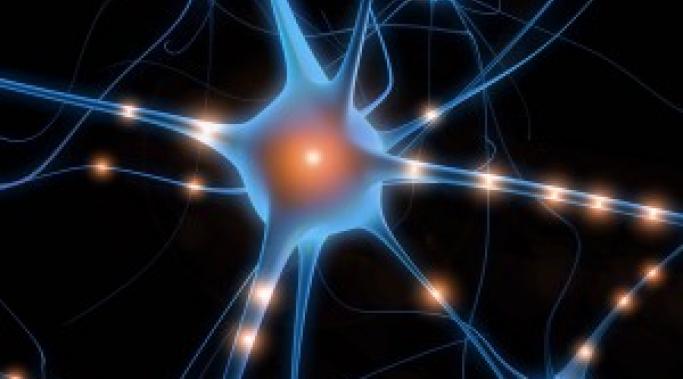All too often we’re told (or we tell ourselves) the wrong things in posttraumatic stress disorder (PTSD)recovery. For example, a woman recently wrote to me:
How do you maintain acceptance of PTSD and its symptoms while pursuing healing?
My answer: You don’t have to.
And then a man I met at a survivor event last week asked me:
If you’re constantly pursuing healing aren't you in a different state of mind than acceptance?
My answer: Yes, and no. Both these questions depend on how you define “acceptance.”
Trauma! A PTSD Blog
A few weeks ago I wrote about how to stop PTSD anxiety, flashbacks and panic from the perspective of putting mindfulness and intention into action. My colleague, Megan Ross (Trauma Therapy Coordinator at Timberline Knolls) and I had a whole conversation about this and I wanted to share her insights with you.
But there was a cliffhanger: Once you understand PTSD symptoms and how mindfulness can help change your physiological experience, the question arises, "What do I do now?" Specifically, what can you do to interrupt or stop flashbacks?
Megan Ross and I talked about this too. See what you think about the tips that we covered.
In the world of posttraumatic stress disorder (PTSD) we're all in the same space together (as survivors), but so often we feel enormously separate, don't we? PTSD symptoms and the lifestyle they create open a void between you and everyone else.
New research, however, points out how important it can be to have a social support network to prevent PTSD.
When Dr. Dan Siegel talks about posttraumatic stress disorder (PTSD) and integration in trauma recovery, he explains PTSD symptoms as pulling survivors between the two extremes of a riverbank: On one side is rigidity and on the other side, chaos.
Six months ago I was in the intensive care unit (ICU) with sepsis. When I came out, my brain was significantly impaired. I couldn’t read, write or speak fluently. I’m in my 40s and suddenly everything I depended on about myself in terms of being able to communicate both personally and professionally had become enormously dysfunctional. I worried I’d never be the same.
When the neurologist and my physician visited my hospital room, I expressed how frightened I was that my brain was going to be changed forever. Immediately, the physician put my fears to rest.
“Don’t worry, you’re going to be fine,” he said. “If you were younger – if you were a child – we’d have more to be concerned about. The brain continues its original development up to the age of twenty-five. If this trauma to your brain had happened during that timeframe we wouldn’t be able to guarantee anything. But you’re old enough so that your neural networks have fully developed. All of your regular neural functions should come back within six months.”
He was right. Slowly, all of my reading, writing and speaking skills have returned. But what happens to people traumatized at a younger age? New research about childhood bullying further proves that the impact of what happens during those crucial years of brain development can last well into adulthood.
For a long time after my trauma I felt sucked into the darkness and despair of grief, loss, fear, anxiety and the frustration of the same question I repeatedly asked myself,
"Who am I now?"
It seemed that trauma and PTSD symptoms had branded me for life and there was no way to:
go back to who I'd been before (I was right about that)
go forward and become someone new (I was wrong about that)
What do we do when we get stuck in that place??
Unwanted trauma memories are soooo hard to get rid of, aren’t they? You try to ignore them, suppress them, pretend they don’t exist or didn’t really happen. But they persist with more determination than ants discovering an untended picnic spread. This means that a trauma memory can hang in an activated loop that makes it feel like threat continues and the experience is present. And then what happens? Whew, PTSD and fatigue, for one thing!
Memory is important when it comes to PTSD and integration, so I decided to ask a pro about all of this – and what can be done about it. Dr. Michael Smith, of Life Extension Magazine, outlined for me fascinating information about the brain, the processing of memories, and how one simple supplement can help improve brain function in areas hugely important for trauma recovery.
On 9/11 I was living on the Upper West Side of Manhattan. I was already deep into years of my posttraumatic stress disorder (PTSD) struggle. At the time of the attacks I was “sleeping late” due to my all-night insomnia. What woke me that morning was the enormous number of sirens careening down Broadway just outside my window. I lived one block from a firehouse and the amount of activity from their garage and on the street was deafening.
I sprang out of bed with my heart pounding. I’d been sensitizing my amygdala for years, so it took very little for me to have an exaggerated startle response and a quick emotional reaction when things out of the ordinary occurred. I turned on the radio and then the TV and watched as the drama unfolded.
New York is a tough city, but that day, a new type of survivorship had just begun.
Posttraumatic-stress disorder (PTSD) involves a lot of sadness: about your having been victimized, about having developed a persistent mental disorder (and that's exactly what it is), about how few people understand what happened to you, about how few people understand how your life has been changed as a result, and about how difficult it is to get it all resolved - fixed - taken care of. And that's hardly a complete list. What do these all have in common? Loss. Sadness is a reaction we have automatically and outside any direct control when we realize we've lost something that matters.
What can you do about it? Two things, basically. You can shift your attention or you can deal with the problem directly. The first option is almost always the easiest, but you should know that it's temporary at best.
In the first two posts in this series (see 1, 2), I have established that:
With posttraumatic stress disorder (PTSD), psychotherapy’s goal is to reduce or remove symptoms needed to qualify one for the diagnosis. This is what “healing” means in this series.
The core of this healing work is permanently reducing or eliminating the noxious feelings associated with memories of trauma. Without "triggered" intrusive memories, the other symptoms of PTSD do not appear.
Both psychology and religion can make naturalistic proposals about PTSD; it is appropriate and necessary to evaluate such proposals by empirical research, which is how science creates reliable knowledge.
Forgiveness has been proposed by both psychologists and religious figures as a potentially important intervention in psychotherapy, and in the therapy of PTSD in particular. It's reasonable to take this proposal seriously.
“Unforgiveness” – the mental state for which forgiveness is proposed as the remedy, has two fundamental feelings associated with it: fear and anger.
Fear is primary, and anger is an adaptive response to fear. Remove fear and anger goes with it.
Let's now look at forgiveness as a deliberate intervention to promote physical health and recovery from psychological trauma.









